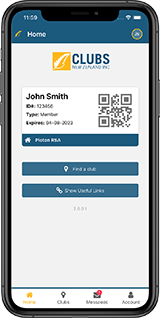Covid may be a Game Changer, but the Rules are Unchanged
18 October 2021
The pandemic has had a number of far reaching and adverse impacts on many aspects of society, some of which were not foreseeable. However, one sadly predictable effect is the severe financial impact on some businesses caused by extended lockdowns. Whilst government help has been available, it will not be enough for some businesses, and they will be turning to retrenchment and redundancies to survive.
A recent decision of the Employment Court is a timely reminder about the crucial importance of following a fair process when restructuring. In Linara Gafiatullina v Propellerhead Limited the Employment Court found that, whilst the disestablishment of Ms Gafiatullina’s role was substantively justifiable, the process followed was not fair and reasonable, and so the dismissal was unjustified.
The dismissal of the employee in this case was not Covid related, but the Court’s judgement is still entirely relevant, as employers must follow exactly the same fair process when making someone redundant for Covid related reasons. No short cuts or relaxation of the requirements are allowed. So what is that fair process?
First, there must be a genuine business reason for the need to disestablish someone’s role. It cannot be related to the incumbent’s personal performance or conduct.
The Employment Relations Authority and the Employment Court will inquire into the merits of a redundancy business decision to ensure it was not a sham, and will want to ensure that the decision, and how it was reached, were what a fair and reasonable employer could have done in the relevant
circumstances. They will not interfere with a genuine reason though where the decision was clearly open to a fair and reasonable employer.
When focusing on your business decision, make sure that you can both articulate it clearly, and also explain the rationale for it. There may be many reasons why you may want to disestablish a role, but normally it will be related to financial, operational, and/or customer driven imperatives.
Once you have established your business reason, you then have to embark on the process. It can be summarised under three key headings – information, consultation and consideration of redeployment.
The information part is often where the process breaks down. An affected employee cannot properly take part in a consultation if they do not have all the relevant information. Basically, there should not be anything in the employer’s mind which is relevant to the decision which the employee has not first been made aware of. Exceptionally, the employer can withhold confidential information, but only where it:
- would involve the unwarranted disclosure of the affairs of another individual;
- is subject to a statutory requirement to maintain confidentiality; or
- is necessary, for any other good reason, to maintain the confidentiality of the information (for example, to avoid unreasonable prejudice to the employer’s commercial position).
Remember that you cannot make your final decision about disestablishing a role until a genuine consultation process has been completed. At this stage, therefore, the disestablishment is a proposal only. Having given all the relevant information to the potentially affected employee(s), ideally in writing, you then seek the employee’s views on the proposal.
The views you will be seeking will be about all aspects of the proposal which could impact the employee. So, for example, if it involves the possible disestablishment of one role and the creation of another, the employee should be able to comment on both.
The feedback can be given in writing or face to face, or in a combination. The employee’s representative may give the feedback. They may have questions which you should try to answer, or they may seek further information, which you should supply, unless the questions or information sought are just not relevant.
You must consider all feedback in good faith, even if the feedback is clearly going to have no effect on the final decision. It’s important to work out why the feedback will not change anything, and to explain why, preferably in writing. If the feedback could change the decision, consider changing the proposal. Occasionally, an employee sees things which you haven’t thought of.
Once you’ve had all the feedback, and decided on the outcome of the proposal, you give the employee your decision, explaining it. If the role is to be
disestablished, the next vital step is to explore whether there is another vacant role that the employee could do. This is called redeployment. This could be a newly created role or one elsewhere in the business. Do not make assumptions. Some employees would sooner keep working, even in a lower status job, on less pay, than be dismissed. You must consider redeployment even if the employee does not ask you to.
You do not have to create a role, and you do not have to put a redundant person in a role they are clearly not suited for, but you do have to consider whether training could enable them to do the role. Interviewing an employee is acceptable, so long as it’s not for a role they clearly could do. Do not
confuse poor performance with capability to do a role. If they are a poor performer, that should be dealt with in a performance improvement exercise. If you have doubts that the employee could carry out a vacant role, you must consult with them about that before making a final decision. This is where Propellerhead failed in its process.
If you have more than one internal candidate being considered for a new role, consult with them about the selection criteria before interviewing. Scoring candidates for selection should be an objective and justifiable process.
Finally, if you dismiss someone for redundancy, check in the employment agreement what notice needs to be given and whether redundancy compensation is due. Redundancies need to be carefully handled and are arguably one of the more complicated types of dismissal process that an employer can embark on and we would urge you to seek advice before starting.
(SOURCE: MGZ Employment Law, The Advocate, Issue 319, October 2021)



